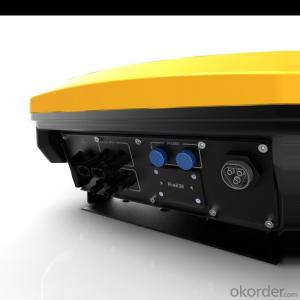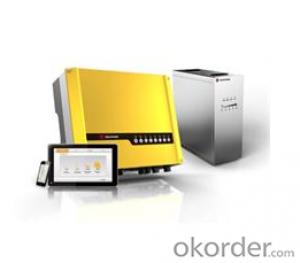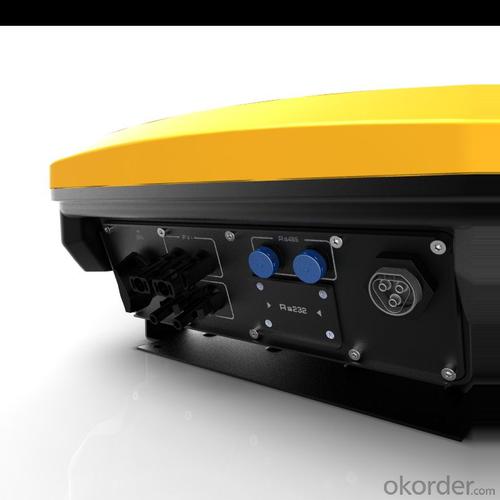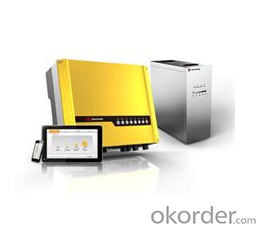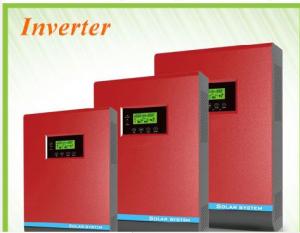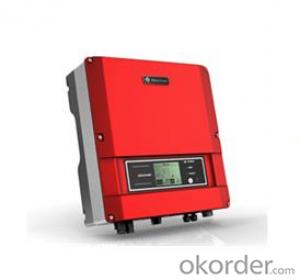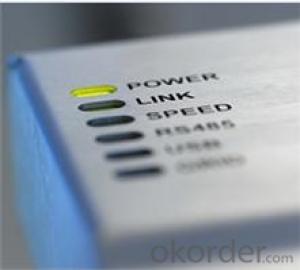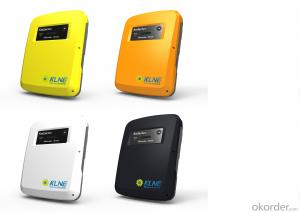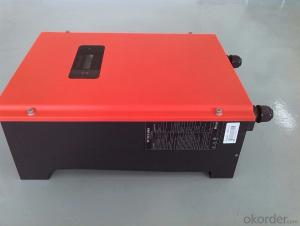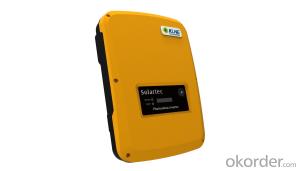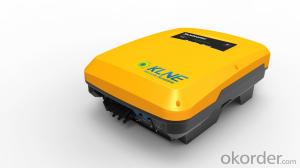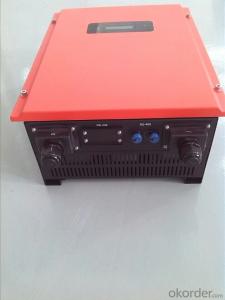Solar Inverter 500 Watt Off-Grid Type Solo-150 Series
- Loading Port:
- Shanghai
- Payment Terms:
- TT OR LC
- Min Order Qty:
- 10 unit
- Supply Capability:
- 1000 unit/month
OKorder Service Pledge
OKorder Financial Service
You Might Also Like
Product Description:
This system can keep 4 energy-saving bulbs with 15W working for 7 hours per day and a 5W radio working for 5 hours a day.
Output voltage: 5V d. c. (USB port) / 12V d. c.
It can work for 3 successive rainy days.
Powered by DC current
Can used out of doors
High effiency and low noise
FAQ
What is your payment terms?
We accept T/T payment, normally we need 20% T/T in advance, 80% payed before shipment.
What is your packing system?
We put the sistem in the wooden box.
Can you do OEM service?
Yes we can, but we need to do it with a certain order quantity.
● System voltage:12V
Ø
Ø
Ø
● Output DC current:6 phases
Product Datasheet:
Main Accessories | Specifications | No. | Notes |
Box | High-quality rolled steel | 1 | Standard box, optional colors |
PV modules | Polysilicon 150Wp | 1 piece | Optional |
Storage battery | Lead acid, maintenance-free, 160Ah | 1 piece | Optional |
Controller | Solo-LS1524S 15A | 1 unit | Standard |
PV accessories shelf | Simple type | 1 set | Optiona |
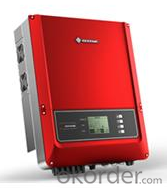
Product Advantages:
- Q: Can a solar inverter be used with a solar-powered air purification system?
- Yes, a solar inverter can be used with a solar-powered air purification system. A solar inverter converts the direct current (DC) generated by solar panels into usable alternating current (AC) electricity, which can power various appliances or devices, including air purification systems. By connecting a solar inverter to a solar-powered air purification system, it can efficiently operate using renewable energy from the sun.
- Q: Can a solar inverter be used in areas with frequent power outages?
- Yes, a solar inverter can be used in areas with frequent power outages. Solar inverters have the ability to convert the direct current (DC) power generated by solar panels into alternating current (AC) power that can be used to operate electrical devices. During power outages, the solar inverter can continue to provide electricity from the solar panels, allowing for uninterrupted power supply. However, it is important to note that a battery storage system may be required to store excess solar energy for use during periods of low sunlight or at night when the solar panels are not producing electricity.
- Q: Can a solar inverter be used with a smart home automation system?
- Certainly! A smart home automation system can indeed work together with a solar inverter. Nowadays, many solar inverters come with communication capabilities built-in, like Wi-Fi or Ethernet connectivity. This means that they can easily be integrated into a smart home automation system. This integration allows homeowners to remotely monitor and control their solar power production and usage using a smartphone app or a central control panel. By having a smart home automation system, users can keep track of real-time energy generation, make adjustments to settings, and receive notifications about system performance or any potential issues. This integration not only enhances the convenience and efficiency of managing solar power but also enables better optimization and synchronization with other smart devices and appliances in the household.
- Q: How does a solar inverter handle power factor correction?
- A solar inverter handles power factor correction by converting the DC power generated by solar panels into AC power that is synchronized with the utility grid. It adjusts the phase and magnitude of the AC output to match the power factor requirements of the grid, ensuring efficient power transfer and reducing reactive power.
- Q: What is the role of a solar inverter in a solar-powered electric vehicle charging station?
- The role of a solar inverter in a solar-powered electric vehicle charging station is to convert the direct current (DC) generated by the solar panels into alternating current (AC) that can be used to charge electric vehicles. The inverter ensures that the electricity produced by the solar panels is compatible with the charging station and the electric vehicles, allowing for efficient and safe charging.
- Q: What is the role of a solar inverter in a solar-powered remote monitoring system?
- The role of a solar inverter in a solar-powered remote monitoring system is to convert the direct current (DC) electricity generated by the solar panels into alternating current (AC) electricity that can be used to power the monitoring system. It also ensures that the electricity generated matches the requirements of the monitoring equipment, regulates the voltage, and assists in efficient power transmission and distribution.
- Q: What is the maximum number of solar panels that can be connected to a single inverter?
- The maximum number of solar panels that can be connected to a single inverter depends on the inverter's capacity and the specifications provided by the manufacturer. It can vary widely based on factors such as the wattage rating of the inverter, the voltage and current output of the solar panels, and the electrical compatibility between them. It is important to consult the manufacturer's guidelines or seek professional advice to determine the appropriate number of panels for a specific inverter.
- Q: Can a solar inverter be used in regions with high humidity or moisture levels?
- Yes, solar inverters can be used in regions with high humidity or moisture levels. However, it is important to ensure that the inverters are designed and built to withstand such conditions. Waterproof or moisture-resistant features may be necessary to protect the inverters from potential damage caused by moisture or humidity. Regular maintenance and monitoring are also recommended to ensure optimal performance in such environments.
- Q: How does a solar inverter handle excess power production?
- A solar inverter handles excess power production by converting the surplus electricity generated by the solar panels into AC power, which can then be either used in the household or fed back into the grid for others to use.
- Q: What is the role of a cooling system in a solar inverter?
- The role of a cooling system in a solar inverter is to regulate and dissipate heat generated during the conversion of DC power from solar panels to AC power for use in homes or businesses. By maintaining optimal operating temperatures, the cooling system ensures the inverter's components do not overheat, which could lead to reduced efficiency, performance degradation, or even system failure.
Send your message to us
Solar Inverter 500 Watt Off-Grid Type Solo-150 Series
- Loading Port:
- Shanghai
- Payment Terms:
- TT OR LC
- Min Order Qty:
- 10 unit
- Supply Capability:
- 1000 unit/month
OKorder Service Pledge
OKorder Financial Service
Similar products
Hot products
Hot Searches
Related keywords
